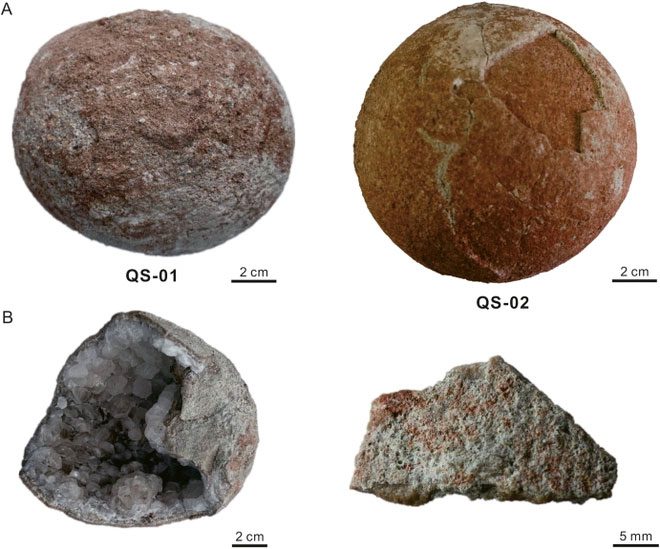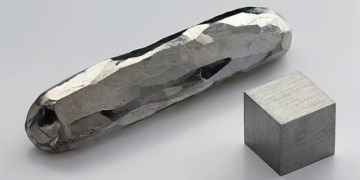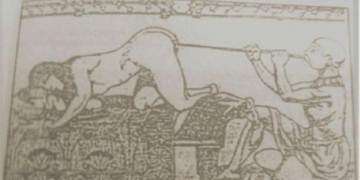Chinese archaeologists have recently announced the discovery of two dinosaur eggs containing numerous calcite crystals in Anhui Province, measuring the size of a cannonball.

Two dinosaur eggs recently discovered by Chinese archaeologists. (Photo: Palaeogeography Journal).
In a study published in the Palaeogeography journal, researchers from China stated that these two dinosaur eggs date back to the Cretaceous period—the final era during which dinosaurs existed.
Paleontologists believe that these eggs belong to a previously undiscovered species of dinosaur, based on their large size and unique spherical shape, as reported by Newsweek on September 16.
“This is the first discovery of a species belonging to the genus Shixingoolithus. This provides evidence for stratigraphic identification in the Tianshan Basin, Anhui Province,” the study noted.
According to researchers, dinosaur eggs from the Cretaceous period in China are abundant, diverse in species, and widely distributed. It is estimated that 16 families and 35 species have been discovered in the country.
They mentioned that one of the two eggs was partially damaged, revealing clusters of calcite crystals inside. Both eggs measure 10-13 cm in length and 9.6-13 cm in width, comparable to the size of a cannonball. Scientists believe these are eggs of ornithopods—a group of small, herbivorous dinosaurs that walked on two legs.





















































